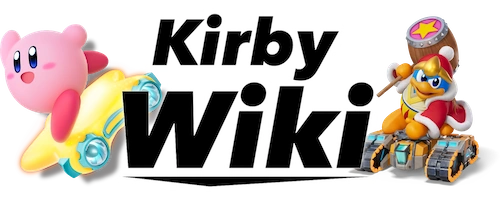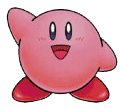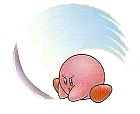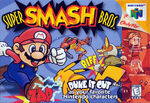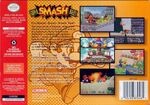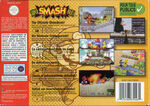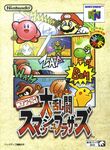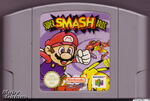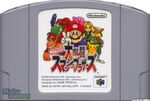| This article contains information that does not coincide with the main series canon. | (Similar) |
| This article is about the first game in the series. For the series in general, see Super Smash Bros. (series). For the Copy Ability, see Smash Bros. |
Super Smash Bros. is the game that started the Super Smash Bros. game series. It was released in Japan on January 21, 1999, in North America on April 27, 1999, and in Europe on November 19, 1999. It is playable on Nintendo 64 and Nintendo iQue and is also available on the Wii's Virtual Console.
Gameplay[]
Super Smash Bros. differs from traditional fighting games in that inflicting the most damage does not guarantee victory. Instead, opposing players must force their opponents beyond the boundaries of the stage. Most attacks inflict damage and can, if enough damage is dealt, knock back the enemy. Each character's health is measured by a meter that represents the damage received as a percentage. The higher the percentage value, the farther the player gets knocked back, and the easier they are to knock off the stage. Unlike other games of the same genre, most moves can be accessed via one-button presses and a joystick direction.
During battles, items related to Nintendo games or merchandise fall onto the game field. These items have purposes ranging from inflicting damage on the opponent to restoring health to the player. Additionally, most stages have a theme relating to a Nintendo franchise or a specific Nintendo game and are interactive to the player. Although the stages are rendered in three dimensions, players can only move on a two-dimensional plane. Not all stages are available immediately; one stage must be "unlocked" by achieving particular requirements.
Single-player[]
Although the player can choose from five difficulty levels, the game's single-player mode always follows the same series of opponents. This game mode is called Classic Mode in subsequent sequels. The player will choose one unlocked character, and fight against a series of characters in a specific order, attempting to defeat them with only a limited amount of lives.
There are three more modes of play. The "Break the Targets" minigame as well as the "Board the Platforms" minigame are two of the remaining single-player games. The objective of the mingames is to break each target or board each platform, respectively. The goal must be achieved without falling off each character-specific stage. The last one is the "Training Mode" section, allowing you to choose any of the available characters and to choose your opponent, as well as any available map. When started, press start to gain almost any control, such as slowed game speed, spawning any item, and telling the opponent what to do.
Multiplayer[]
Up to four people can play in multiplayer mode, which has specific rules predetermined by the players. Stock and timed matches are two of the multiplayer modes of play. This gives each player a certain amount of lives or a selected time limit, before beginning the match. A winner is declared once time runs out, or if all players except one loses each of their lives.
If there is a tie between two or more combatants, the contenders are returned to the fighting stage in a "Sudden Death" battle with 300% damage each. This means players are easily knocked out, so as to quickly determine the winner.
Playable Characters[]
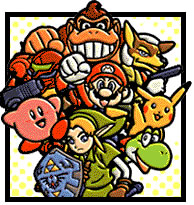
The cast of default characters in Super Smash Bros.
The promotional artwork is done in the style of a comic book, and the characters were portrayed as dolls that come to life to fight in the imagination of Master Hand. This presentational style has since been omitted in the sequels, opting instead for a more serious art style–such as using in-game models for the characters in place of hand-drawn art–and replacing the dolls with figurines, or "trophies" as the game refers to them. Originally, King Dedede, Bowser, and Mewtwo were going to be added as playable characters, but due to time restraints, they were cut from the list. These three would eventually make it into future installments of the Super Smash Bros. series.
Default Characters[]
Unlockable Characters[]
- Luigi
- Ness
- Captain Falcon
- Jigglypuff
Stages[]
Default Stages[]
- Congo Jungle
- Dream Land
- Hyrule Castle
- Peach's Castle
- Planet Zebes
- Sector Z
- Saffron City
- Yoshi's Island
Unlockable Stage[]
- Mushroom Kingdom
Trivia[]
- The controls for the game and future Smash Bros. installments are heavily influenced by the controls of Kirby Super Star.
- Super Smash Bros. was created by Masahiro Sakurai, the same creator of the Kirby franchise.
- This is the only Super Smash Bros. game to be rated E by ESRB. Super Smash Bros. Melee and Super Smash Bros. Brawl are rated T, and Super Smash Bros. for Nintendo 3DS and Wii U and Super Smash Bros. Ultimate are rated E10+.
- This was Makiko Ohmoto's first game to voice Kirby.
- King Dedede was considered for being a playable fighter, but the idea was scrapped, instead having him relegated as a background element in the Dream Land stage. However, he made his playable fighter debut in Super Smash Bros. Brawl.
- The "off-screen death" system for getting KO'd was a concept for Kirby's Dream Land. However, it was not implemented because Sakurai had forgotten about it.[2]
Artwork[]
Box Art[]
Media[]
Gallery[]
References[]

|
This page uses content from Wikipedia. The original page was at Super Smash Bros.. The list of authors can be seen in the page history. Like Kirby Wiki, the text of Wikipedia uses the CC-BY-SA 3.0 license. |
